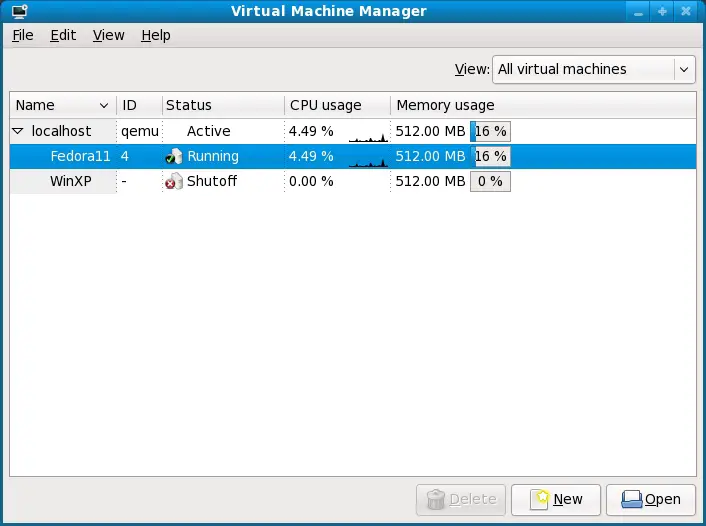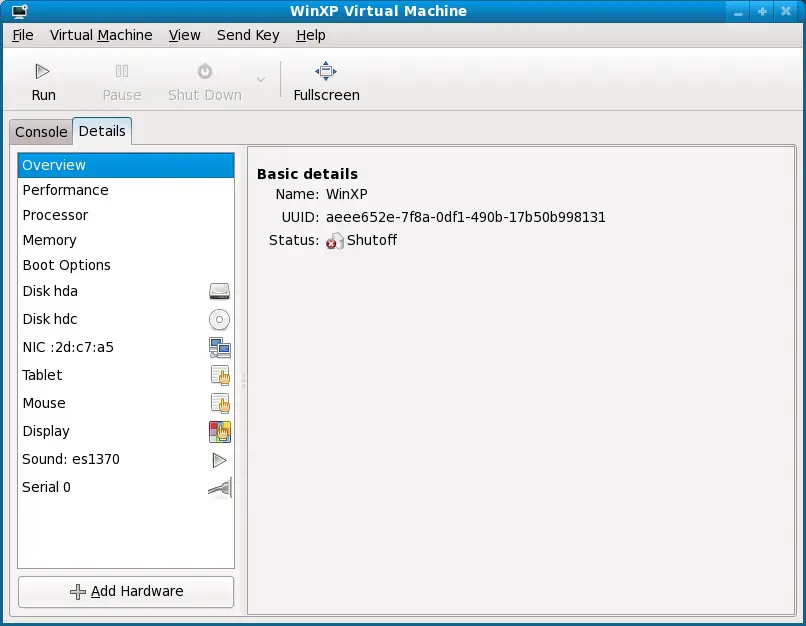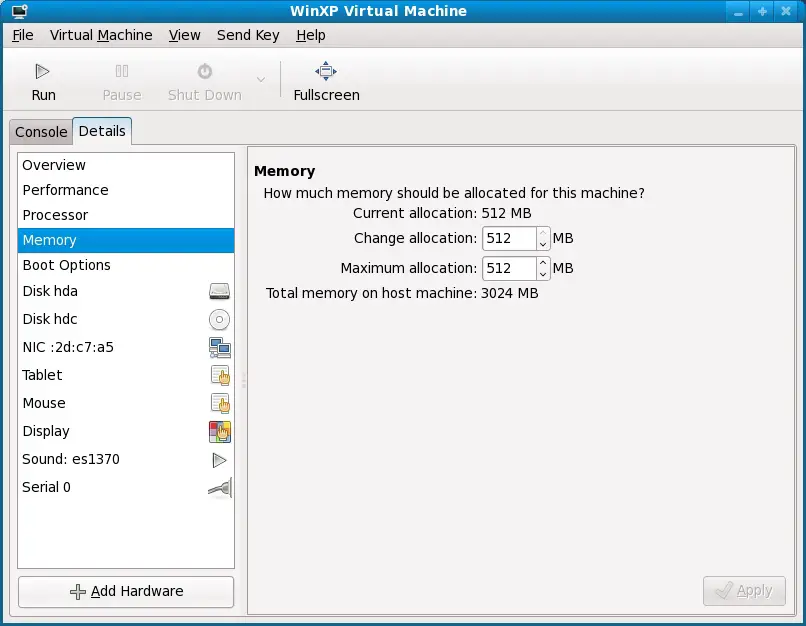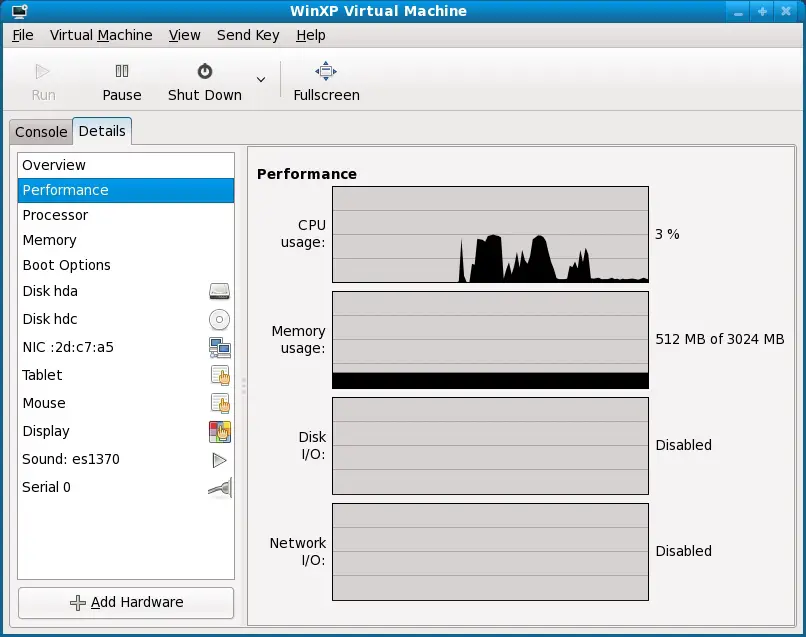Managing and Monitoring Fedora based KVM Guest Systems
| Previous | Table of Contents | Next |
| Running Windows on Fedora Using KVM Virtualization | Adding a New Disk Drive to a Fedora Linux System |
Take your Fedora Linux Skills to the Next Level |
In the previous chapter (Installing and Configuring Fedora KVM Virtualization) we covered the steps necessary to configure the Fedora operating system to act as a KVM host system and created, installed and ran a KVM guest system.
In this chapter we will explore the use of the virt-manager tool to manage the KVM guest operating systems.
Starting and Stopping KVM Guest Systems
When a KVM virtual guest system has been configured it will appear in the list of systems when the virt-manager is loaded. The virt-manager tool is launched either by selecting the Applications->System Tools->Virtual Machine Manager or from the command-line by running virt-manager. If virt-manager shows the host system as being disconnected, connect to it either by double clicking on the host in the list or right click on it and select Connect from the resulting menu.
The following screenshot shows the virt-manager tool running on a Fedora system. It lists one connected host system (localhost), and two guest virtual systems named Fedora11 and WinXP, one of which is running and the other shutdown:
To stop a virtual machine running a guest OS it is not sufficient to simply close the Virtual Machine Console and Virtual Machine Manager windows. Doing so only closes the manager and console, leaving the guest operating system running in the background. In fact, if you try closing these windows and then restart the virt-manager tool you will see the guest OS is still listed as running, and double clicking on it will display the guest OS exactly as it was before you closed the console window.
To shutdown a guest OS, either shut it down using the operating system's own shut down mechanism, click on Shutdown in the Virtual Machine Console toolbar, or right click on the guest OS from the list in the virt-manager main screen and select Shutdown.
Pausing a KVM Guest Operating System
KVM provides the ability to pause and resume a running guest operating system. To pause a running system, either click the Pause button in the Virtual Machine Console toolbar, or right click the operating system in the virt-manager main screen and select Pause.
A paused guest OS may then be resumed either by clicking again on the Pause button in the Virtual Machine Console toolbar, or right click the operating system in the virt-manager main screen and select Resume.
Note that a paused guest system will not survive the reboot of the host operating system and continues to use system memory in the paused state. In the event that the host operating system is rebooted, the guest operating system will need to be restarted and cannot be resumed from its paused state.
Changing KVM Virtual Guest System Settings
During the initial configuration of the guest OS in virt-manager a number of resources such as memory allocation and CPU usage were defined. It is common to discover after the guest OS starts running that these settings need to be changed. Fortunately, virt-manager makes it easy to change these settings.
One point to note is that it is not possible to change CPU and memory settings for a currently running KVM virtual system. Be sure to shutdown the system you wish to re-configure before attempting to change these settings.
Settings are changed from within the Details screen of the Virtual Machine view window. If this window is not currently visible it can be accessed by launching virt-manager and double clicking on the virtual machine for which the configuration settings are to be changed. Once the viewer is visible, click on the Details tab to display the screen illustrated in the following figure:
The details screen consists of a list of categories on the left hand side and the settings corresponding to the currently selected category in the main panel. The panel on the left allows the current displayed category to be changed. For example, to change the memory assigned to the guest system, select the Memory option and change the settings as required, clicking the Apply button to commit the new settings:
Additional disks and other devices may be added by clicking on the Add Hardware button at the bottom of the hardware category list, selecting Storage from the Hardware type menu and clicking on Forward. Specify either a disk partition, or a file location to act as the new disk.
Monitoring Virtual Machine Performance
The virt-manager tool provides information on CPU and memory usage together with disk and network I/O for each guest operating system. To view the performance graphs, display the viewer window (double click on the guest in the virt-manager window), select the Details tab and click on the performance tab. The performance screen will display real-time graphs showing the performance statistics for the selected guest:
In addition, the virt-manager main window displays smaller CPU graph and Memory scales next to each guest OS together with a bar indicating the percentage of overall available memory used by each operating system:
The overall performance statistics of the host operating system together with network and storage configuration information may similarly be viewed by selecting the localhost in virt-manager and selecting the Edit->Host Details menu option.
Take your Fedora Linux Skills to the Next Level |
| Previous | Table of Contents | Next |
| Running Windows on Fedora Using KVM Virtualization | Adding a New Disk Drive to a Fedora Linux System |










